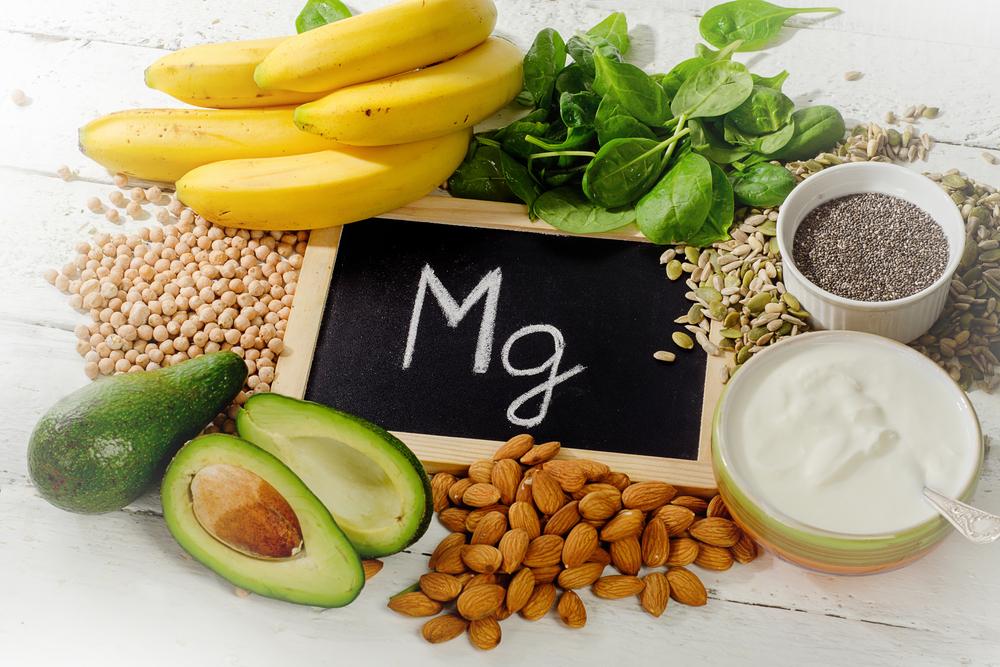Did you know herbs have a wealth of protective polyphenols-plant compounds with potent antioxidant and anti-inflammatory effects? Not only do they have these wonderful medicinal actions for us humans many uses apply to our pets to. Millions of years before the first human walked the earth, creatures large and small were using plants as their primary source of healing.
Today western society is spoiled by the concept of making problems go away quickly so we can get on with life rather than taking the longer route towards finding the cure. This is an incredibly big problem in the veterinary world, how they use allopathic medicine like prednisone,steroids, NASAIDs and the over use of antibiotics that suppress the immune system more. These are all a ‘quick fix’ and mask the problem. Although allopathic medicine does have its place, common conditions can be supported successfully with the use of herbs.
Here at My Pet Nutritionist, we use holistic principles and philosophies and treat and find the cause, rather than suppressing symptoms. While using these wonderful herbs, they enable us to support the natural healing mechanisms of the body and help our pet’s homeostasis; the state of harmonious balance. I have listed some of the wonderful herbs we regularly use in clinic today that have astounding results, alongside diet and other nutraceuticals.
Nature itself is the best physician.
Hippocrates
ASHWAGANDHA
Is a small evergreen shrub that grows in India, the Middle East and parts of Africa. Ashwagandha
(withania somnifera) is commonly known as ‘Indian Winter Cherry’ or ‘Indian Ginseng’ It belongs to the Solanaceae
(nightshade) family. This lovely shrub is considered as an adaptogen, meaning it promotes balance in many different systems of the body. It has amazing anti-inflammatory, antioxidant, immune amphoteric, nervine, antispasmodic, chemoprotective activity and a wonderful immunomodulator. It’s species name, somnifera means ’sleep –inducing’ in Latin. Somnifera indicates it’s traditional Ayurvedic use for supporting somnolence or sleepiness. It is one of the most important herbs ofAyurveda (the traditional system of medicine in India) and can be traced back to 6000 BC
(Charak Samhita, 1949). Ashwagandha for humans and dogs help to regulate and boost the immune system and reduce anxiety. It supports a healthy response to stress and mental wellbeing. Human studies have shown it to lower high cortisol levels significantly. Ashwagandha contains carotene, vitamin C, iron, calcium, flavonoids, antioxidants and essential minerals that support hundreds of biological functions in the body.
Recommended
Cytoplan Organic Ashwaganda based on 200mg per 10kg of weight.
PARTS USED – Root
COMMON USES -Stimulating the thyroid (dogs with hypothyroidism), anxiety, fatigue, nervous exhaustion (adrenal fatigue), immunity, rheumatoid arthritis, adrenal lymphoma, lymphosarcoma and sexual hormonal balance.
SLIPPERY ELM
Is a deciduous tree that can grow to 80feet tall. They are found in forests of the eastern half of the USA and Canada.Slippery Elm is related to the American Elm
(ulmus americana)and is sometimes called Red Elm or Moose Elm. The name is developed due to the mucilaginous inner bark which pioneers in North America chewed for quenching thirst. It was also used by physicians during the American Revolution. Today it is best used in the digestive track, where it serves as a soothing, protecting and lubricating demulcent and general astringent at the same time. The inner bark of the Slippery Elm is not only packed with nutrients like vitamins A, B complex, C, K, Calcium, magnesium and sodium, but it is also having anti-inflammatory properties that is soothing of the respiratory system which is known to help with kennel cough and very soothing on the mucous membranes that reduces inflammation. Sadly, the tree is declining so slippery elm should be reserved for circumstances where alternatives are ineffective. In many instances slippery elm can be substituted with plantain
(Plantagosp.) If a more mucilaginous remedy is needed, marshmallow root
(Altheaofficinalis) is an excellent alternative. Greens for Healthy Pets have a lovely
sustainable sourced slippery elm based.
PARTS USED – Inner bark
COMMON USES – Digestive tract, respiratory tract, skin
MILK THISTLE
A native of the Mediterranean region ofEurope, milk thistle
(Silybum marianum) has become naturalised in many portions of North America. In many areas it has earned the reputation of being an invasive weed that has been used for over 2000 years.Milk thistle is cultivated throughout much of the world for its medicinal seeds and is effective in protecting and regenerating the liver due to the chemical it provides called silymarin (which is a mixture of 3 compounds known assilybin, silydianin and silychristine). Because of the benefits that have been examined in humans it has also been approved as beneficial for pets. The liver stores many toxins which can lead to many diseases in our pets including kidney disease, pancreatitis, cancer and diabetes. According to Mark E. Richardson in his article entitled The True Causes of Allergies, your pet’s liver can be overproducing histamines because it has too many toxins to deal with. As our pets are exposed to so many environmental toxins that we can’t control it’s a good idea to detox regularly with milk thistle especially at the end of every season. Avoiding chemical flea, tick, worming treatments and over vaccinating will also reduce the toxic load we expose them to. Milk thistle contains high amounts of essential amino acids and minerals including calcium, potassium, magnesium, sodium, iron,manganese, zinc and copper.
Greens for Healthy Pets Organic Milk Thistle.
PARTS USED – Ripe seeds
COMMON USES – protecting and strengthens the liver/gallbladder and a good detox
PARSLEY
Originally a native of southeast Europe and west Asia, parsley is now cultivated worldwide. The most common varieties are curly and flat leaf. This is a must have in your home or garden as it is one of the most versatile, cheap and easy to grow. Parsley
(Petroselinumcrispum) leaves and stems are very nutritious, containing up to 22percent protein and impressive amount of vitamins A, C, B 1,B2,and K, calcium, riboflavin, potassium, iron, magnesium, niacin,magnesium, manganese, chlorophyll, phosphorus as well as providing fibre and phytonutrients – wow impressive? Traditionally it is used for urinary tract issues and a breath freshener. Parsley root is also known by herbalists as an excellent diuretic that especially beneficial in the treatment of rheumatoid conditions. Add 1 tablespoon per 10kg of animal’s body weight.
PARTS USED – Leaf, stem and root.
COMMON USES – Digestive and urinary tract,joints and fresh breath
CHAMOMILE
A Native of Europe and western Asia,chamomile if cultivated worldwide. This herb is a mild sedative that is safe,gentle and effective in a broad spectrum of applications. In the digestive tract, chamomile serves to ease nervous spasms, help to expel gas and aids in productions of bile to improve digestion. The most common two used are German chamomile (
M. recutita) and Roman chamomile
(Chamaemelumnobile) Both German and Roman chamomiles share a nearly identical range of therapeutic usefulness, but German chamomile is by far the more popular medicine because it has received much more research and attention. This is excellent to use for those dogs who are suffering chronic or acute gastric disorders as it can reduce inflammation that is caused by inflammatory bowel disease. For conjunctivitis whether bacterial infection or an irritant from airborne irritants or allergies, using a chamomile tea bag or homemade infusion can be applied several times a day as an anti-inflammatory antimicrobial eyewash. Many dogs who suffer with skin eruption, where the skin is inflamed, raw or broken and where anti-inflammatory or antihistamine action is needed will self- select (known as Zoophamacognosy) German chamomile. Its principle active constituents naturally occurring proven that is related to synthetic ibuprofen
(Ramadamet al. 2006).
PARTS USED – Flower
COMMON USES – Chamomile is a mild sedative,antispasmodic, anti-inflammatory and digestive tonic that helps with skin,liver, mucous membranes and nervous system.
GARLIC
Is a member of
Allium species that range throughout the world. It has theorised that garlic’s wild ancestors originated from west-central Asia. Garlic
(Alliumsativum) is a controversial topic and many disagree that garlic is safe for our pets due to the sulfoxides and disulfides that can damage red blood cells and cause anaemia. There is some truth to this but we would need to be feeding a very large amount for this to happen, if we use common sense and in moderation it is perfectly safe. Always check dosages to suit your dog’s body weight. Avoid feeding garlic to young pups and ideally after the age of 6months. Garlic fed in the correct dosages have many medicinal activities including a natural flea and tick repellent, it is a good idea to start before flea and tick season to get into the dog’s system. It can make him less appealing to pests due to the smell through your dog’s skin. It is best to use organic garlic, freshly crushed and left for at least 10- 15 minutes before adding with food. This releases the allicin which is the active medicinal ingredient that gives it antibiotic, anti-cancer, antiviral and antioxidant properties. Garlic works against many forms of virus, acts as a prebiotic and won’t compromise beneficial flora in the digestive tract, unlike conventional antibiotics. Advised dosage is 1 small clove per 15kg of weight.
PARTS USED – Bulb segments of which are called cloves
COMMON USES – Anti-bacterial, anti fungal and stimulates the immune system.
DANDELION
A native of Europe and Asia, Dandelion
(Taraxacumofficinale) has found its way onto every continent. You may be most familiar with dandelion as a stubborn weed in your garden or as a child you were teased if you picked one you will wet the bed! Perhaps this is a myth,especially if you touch one it wouldn’t make you do this but there is some truth to the story as dandelion is a diuretic. If we eat dandelion leaf it will promote diuresis; the increased production of urine. The root however, is a safe, reliable liver tonic. The liver has a big job to do with removing toxins and is the primary filtering organ of the body. It plays critical roles indigestion and through the production of bile so keeping this vital organ detoxed regularly using dandelion roots is one of the best things you can do for your pet.
Dandelion is one of the most complete plant foods on earth. A 1-cup serving of fresh dandelion greens provides as much as,2,000 international unit (IU) of vitamin A (one and a half times the recommended daily allowance of an adult human), 20 percent protein (by content, that’s what spinach provides) it also contains vitamin C,K, D and B complex, iron, manganese, phosphorous, potassium and many other trace minerals. Alternatives for liver and digestion are, burdock, milk thistle, marshmallow and chickweed if dandelion doesn’t suit your pet.
PARTS USED – all parts are used for various applications.
COMMON USES – as a diuretic, stimulates the liver, anti-inflammatory improves digestion.
There are many forms in which herbs can be administered. Herbal preparations include, infusion, tea, alcohol tinctures (or extracts) glycerine tinctures, decoctions and capsule. They can also be added to your dog’s food dried or fresh. If your pet is sensitive to changes in diet,then start off with small amounts. If you are thinking of adding any herbs to your dog’s diet for medicinal purposes, it is important to work closely with a professional to determine the correct dosages and if it is safe to use.
If you want to find out more, check out our
consultation services.
MPN Team x




















